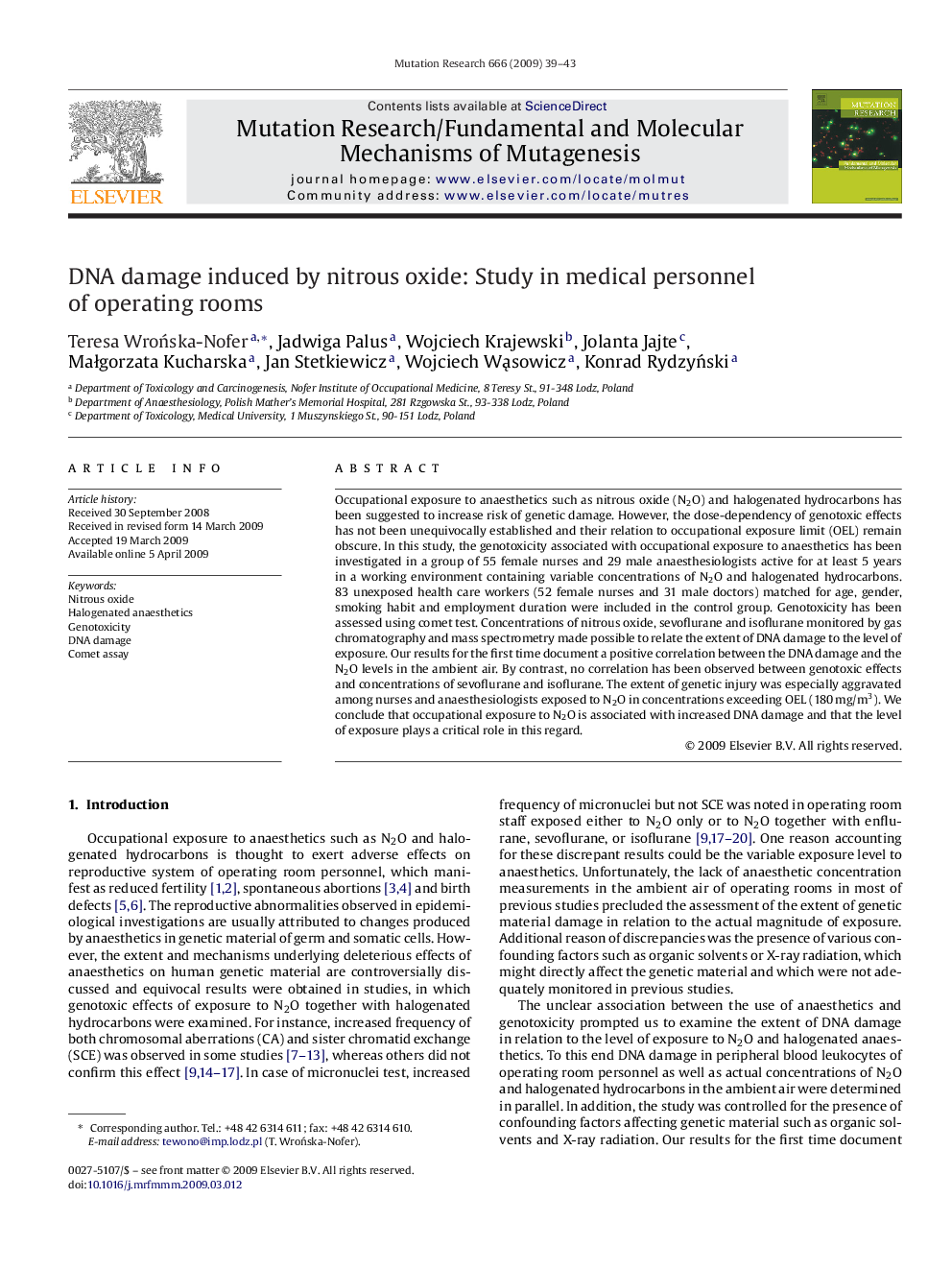| Article ID | Journal | Published Year | Pages | File Type |
|---|---|---|---|---|
| 2147009 | Mutation Research/Fundamental and Molecular Mechanisms of Mutagenesis | 2009 | 5 Pages |
Occupational exposure to anaesthetics such as nitrous oxide (N2O) and halogenated hydrocarbons has been suggested to increase risk of genetic damage. However, the dose-dependency of genotoxic effects has not been unequivocally established and their relation to occupational exposure limit (OEL) remain obscure. In this study, the genotoxicity associated with occupational exposure to anaesthetics has been investigated in a group of 55 female nurses and 29 male anaesthesiologists active for at least 5 years in a working environment containing variable concentrations of N2O and halogenated hydrocarbons. 83 unexposed health care workers (52 female nurses and 31 male doctors) matched for age, gender, smoking habit and employment duration were included in the control group. Genotoxicity has been assessed using comet test. Concentrations of nitrous oxide, sevoflurane and isoflurane monitored by gas chromatography and mass spectrometry made possible to relate the extent of DNA damage to the level of exposure. Our results for the first time document a positive correlation between the DNA damage and the N2O levels in the ambient air. By contrast, no correlation has been observed between genotoxic effects and concentrations of sevoflurane and isoflurane. The extent of genetic injury was especially aggravated among nurses and anaesthesiologists exposed to N2O in concentrations exceeding OEL (180 mg/m3). We conclude that occupational exposure to N2O is associated with increased DNA damage and that the level of exposure plays a critical role in this regard.
